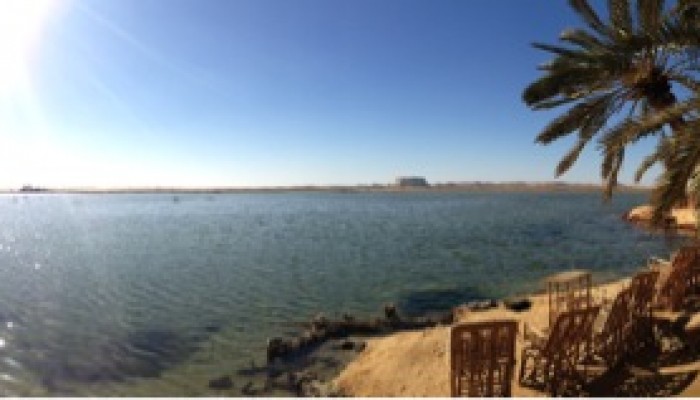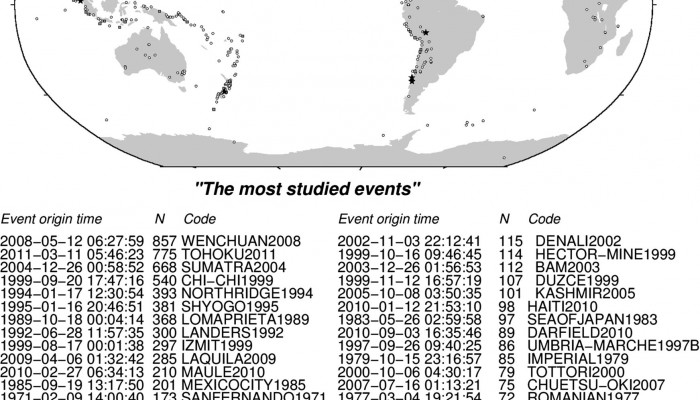Lava Store, Pacaya Volcano, Guatemala An entrepreneurial Guatemalan sets up a lava store next to Pacaya (my understanding is that they sold products made from the lava, not just pieces of it – which are in abundance in the area!). This store was destroyed by the 2nd March 2014 lava flow. (Credit: Joel Gill, February 2014)
If you didn't find what you was looking for try searching again.
Between a Rock and a Hard Place
Science Snap (#21): Diatoms
KT Cooper is a PhD student in the School of Earth Sciences at the University of Bristol. A carbonate geochemist by training, she has just returned from a three-month secondment to Houston, Texas, USA working with Exxon Mobil. When you start looking at things at a microscopic level, everything starts to look a little alien. Minerals assemblages can look like the landscapes of far off planets and mi ...[Read More]
GeoLog
EGU 2014 General Assembly programme now online!
The EGU General Assembly 2014 programme is available here. Take a look and – if you haven’t already – register for the conference by 31 March to make the early registration rates! The scientific programme of this year’s General Assembly includes Union Symposia, Interdivision Sessions, Educational and Outreach Symposia, as well as oral, poster and PICO sessions covering the full spectrum of t ...[Read More]
Geology for Global Development
Save The Date – GfGD National Conference 2014
Following the success of our first National Conference in October 2013, we are very pleased to announce that Friday 19th September 2014 has now been booked for our next conference… On Friday 19th September we hope to again gather over 150 young geoscientists for a one-day event, exploring further the role of geoscience within international development. As was the case last year, our conferen ...[Read More]
Geology for Global Development
Website Resources…
There are a number of ways in which you can keep in touch with our work, including Facebook and Twitter. We also have a full website, with a range of articles and resources. Here are a few things that you may find interesting… GfGD in the News – A series of articles from 2011-2013 that talk about our work. Himalayas Education Project – Articles on the project background, hazardsc ...[Read More]
Green Tea and Velociraptors
Double-whammy signifies the demise of the dinosaurs
The meteoric impact that wiped out the non-bird-line dinosaurs is an iconic image of life and death on Earth. It signifies a point in time when life changed forever. It took from us animals that we will never see again. But was it just a single strike that created these winds of permanent change? The crater from Chicxulub in Mexico is the scapegoat for taking dinosaurs from us, but did it have a p ...[Read More]
Four Degrees
The wet with the dry: The geology of Siwa Oasis
Flo takes us on a photoblog-trip to Siwa Oasis in Egypt where epic sand seas meet freshwater springs, saline lakes and sulphurous hot pools! The blog’s going on holiday this week! I spent a week in Egypt on holiday last month and braved the 10 hour overnight bus journey from the capital city Cairo to visit the breathaking beauty of the Siwa Oasis in the Egyptian sand sea of the Libyan desert. I h ...[Read More]
GeoLog
Imaggeo on Mondays: Exploring the East African Rift
This week’s Imaggeo on Mondays is brought to you by Alexis Merlaud, an atmospheric scientist from the Belgian Institute for Space Aeronomy. While the wonders of the African atmosphere feature in his photography, the East African Rift has a much bigger tale to tell. Drawing from all aspects of geoscience Alexis shares its story… This picture shows Kilimanjaro, Africa’s highest mountain, at sunrise. ...[Read More]
Seismology
A bibliography of seismic events
Search for previous scientific work is never an easy task. Thanks to the internet and good search engines such as Google Scholar this process has been made a bit more easier. (It makes young scientists wonder how searching was done in the pre-internet days!). Although searching nowadays seems to be a simple tasks, it still requires putting in the correct combination of search terms. Furthermore yo ...[Read More]
Geology for Global Development
Field Research in Guatemala (4) – Reflections from Fuego
Joel Gill (GfGD Founding Director) continues his live reporting from Guatemala, discussing his interdisciplinary field research relating to natural hazard interactions and disaster risk reduction. This fieldwork forms part of a NERC/ESRC funded PhD, supervised by staff in the Department of Geography at King’s College London. Over the past few weeks I’ve had the opportunity to see some remar ...[Read More]


